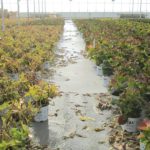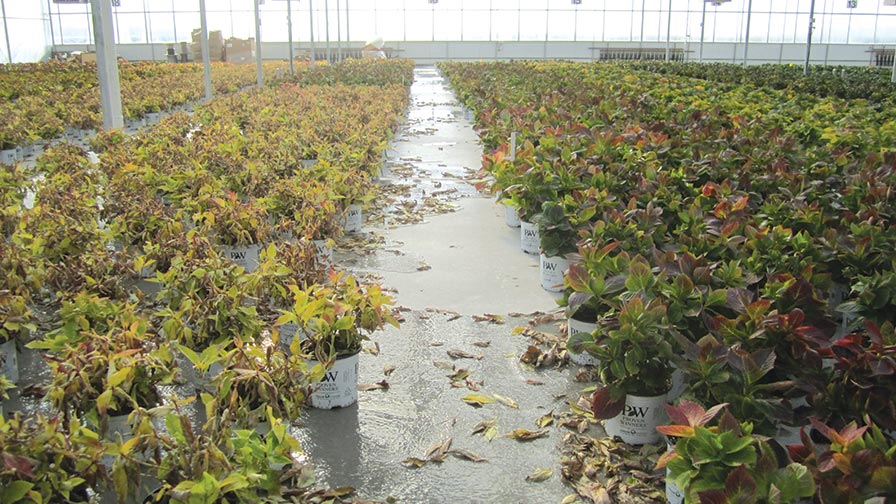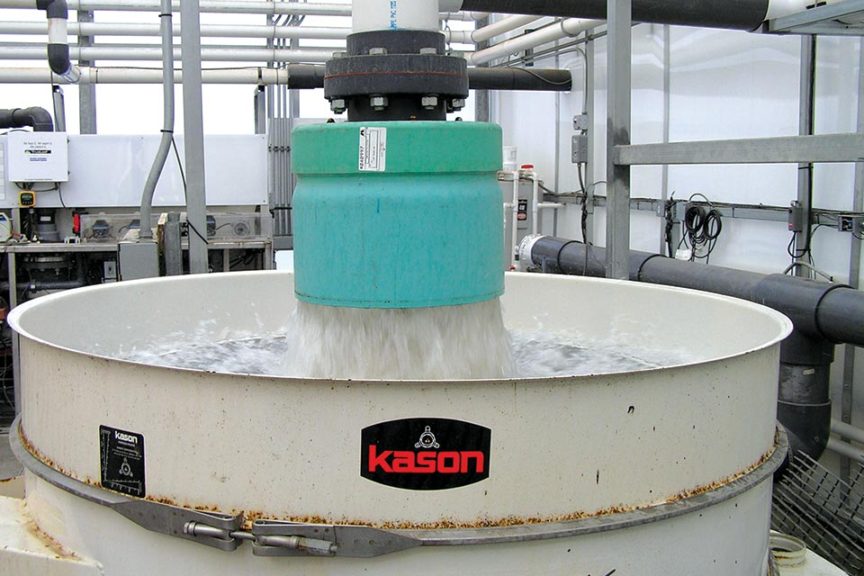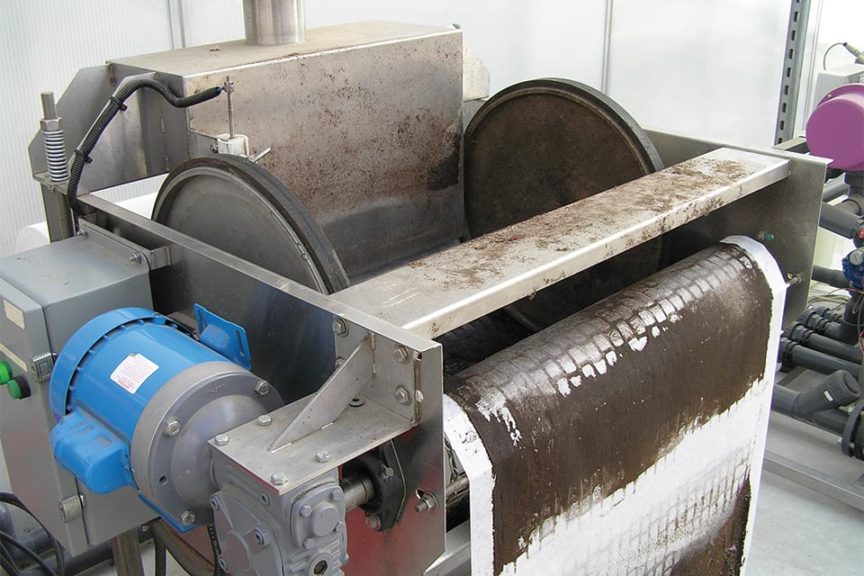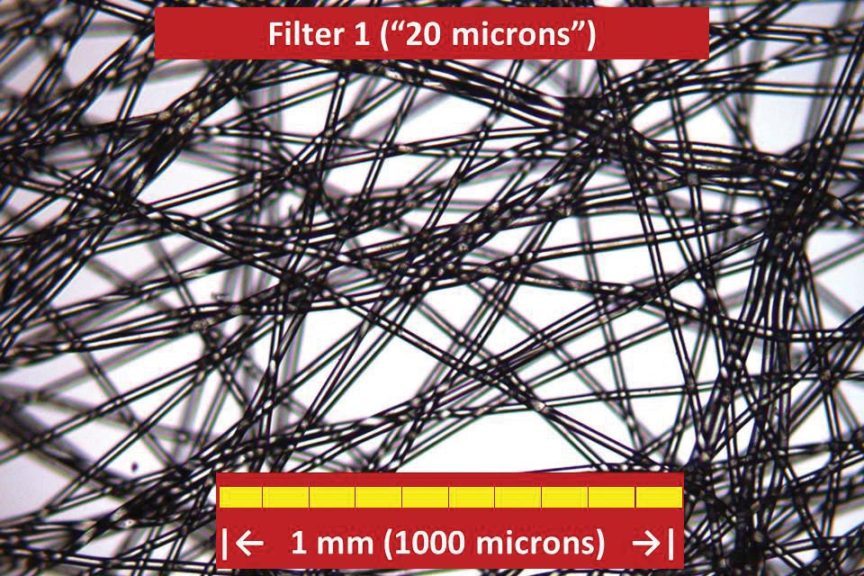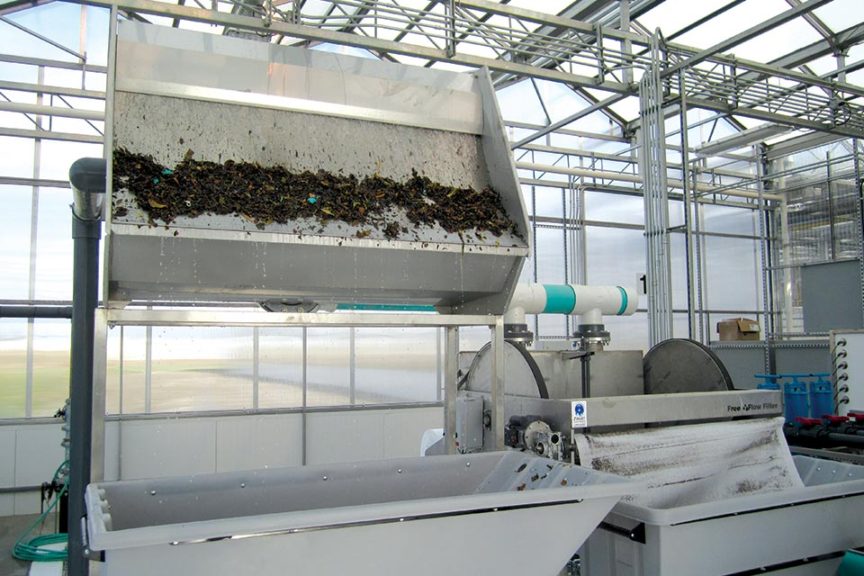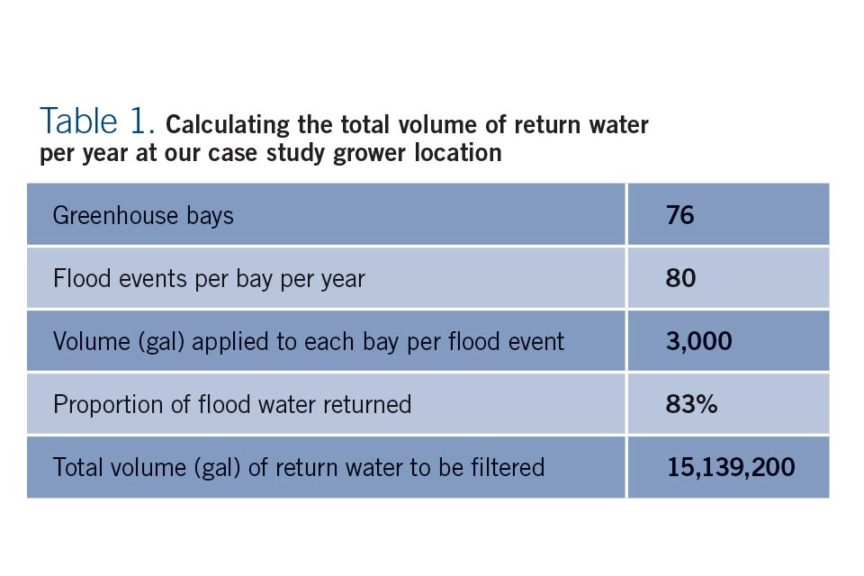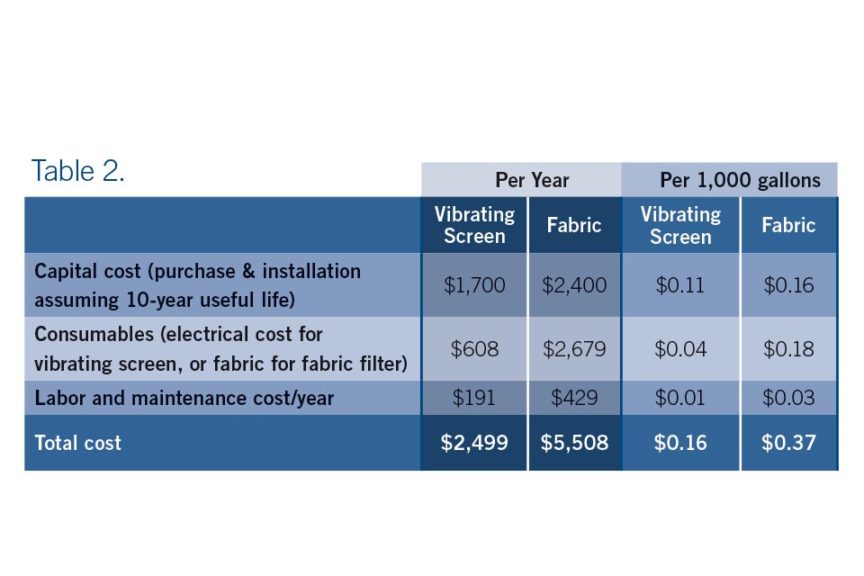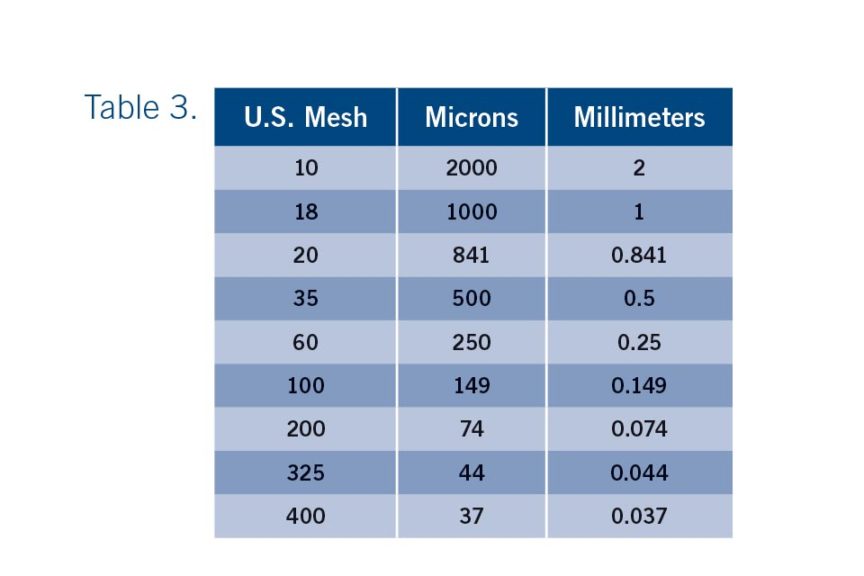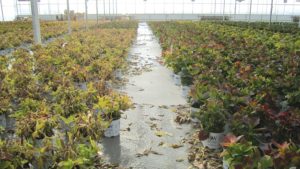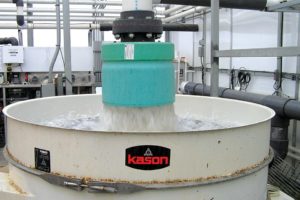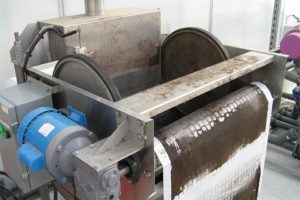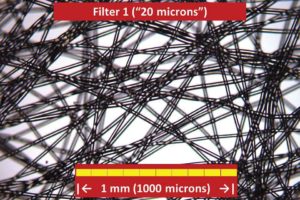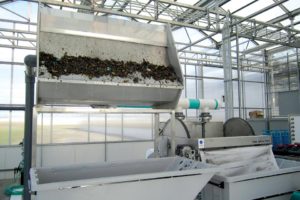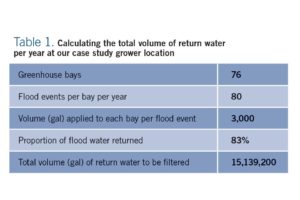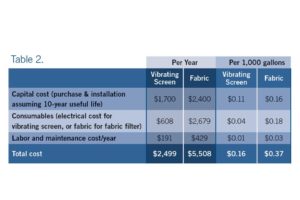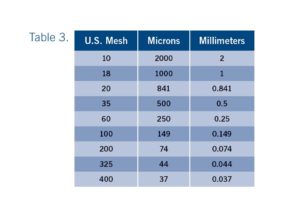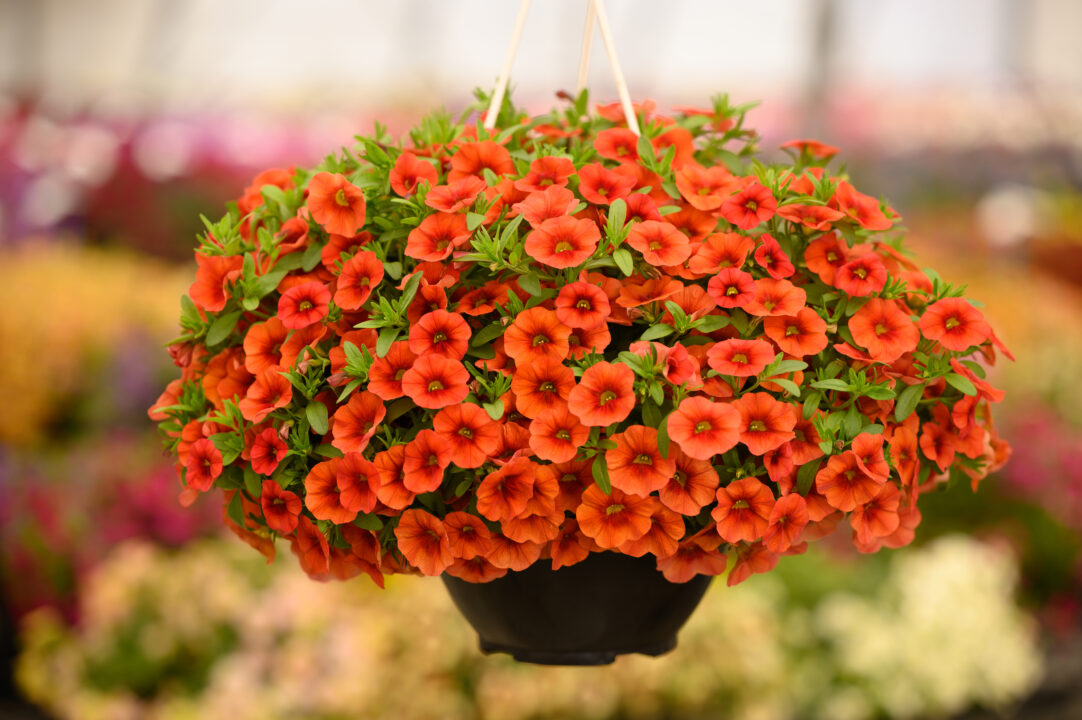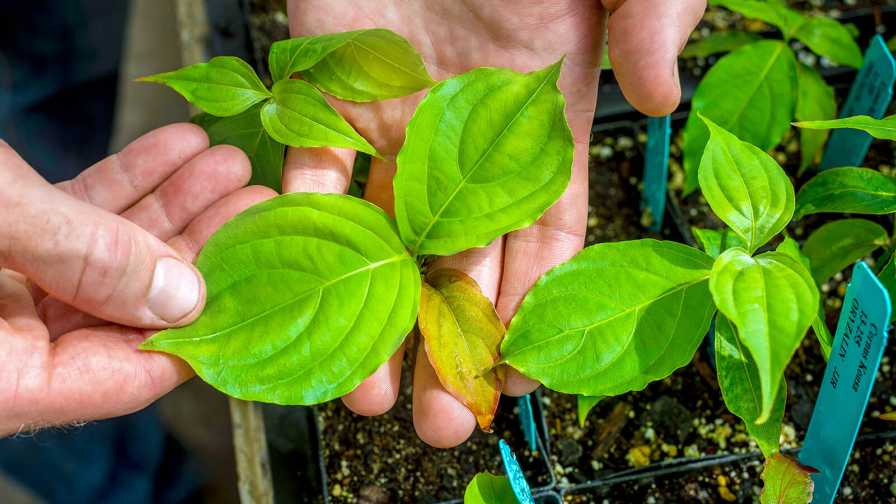Select The Right Filter For Ebb-And-Flood Irrigation
Many of the largest greenhouses are now using flood floors with recirculated nutrient solutions, and almost all require a filtration system. During flooding and return, water passes at high flow rates from tanks to the floors and back to a return tank. The return water can be loaded with debris including plant parts, growing media, and labels (Figure 1, see slideshow). It can potentially also distribute plant pathogens and other microbes.
Growers use various filter types to clean this return water, as part of the water treatment chain to minimize disease, algae, and clogging of the system. Our research is analyzing the quality of recirculated water in grower operations and the efficiency of their filters.
Calculating The Cost
Let’s take the example of a leading Michigan grower who was evaluating two different types of filters, to illustrate factors to consider when filtering return water from flood floors. We first calculated the total water volume that was filtered per year to be approximately 15.14 million gallons (Table 1). That is a lot of water! Therefore, cost and efficiency of filtration systems are important.
The grower was using two filter types (Figures 2 and 3, see slideshow). With a vibrating screen filter (Figure 2, see slideshow), water enters from a central pipe onto a circular metal screen. A motor vibrates the screen to help keep the filter clean and remove material to the edge of the filter where it is collected for disposal. On the downside, this filter is somewhat noisy and requires electrical energy.
With a fabric (sometimes called paper) media filter (Figure 3, see slideshow), water passes into a collection basin and drains through a filter fabric. As particles clog the pores in the fabric, the water level rises in the collection basin. A sensor turns on a motor, which unrolls fresh fabric. Fabrics vary widely in their thickness and pore size.
With some simple financial assumptions (Table 2, see slideshow), we estimated the cost per year and per 1,000 gallons for these two filter types. The big difference between the treatment cost per 1,000 gallons was in the consumables — electricity for the vibrating screen, or the rolls of fabric used by the fabric filter.
Evaluating Performance
Was there a difference in performance between the filters? To test this under commercial conditions, we measured total suspended solids (TSS) before and after filtration for recycled irrigation water in 11 greenhouse and nursery operations around the U.S. In the TSS lab test, a very fine (2-micron) filter removes the particles in a water sample. After oven-drying the filter, the weight of these particles can be measured in milligrams per liter (mg/L, equal to ppm).
We found that TSS varies greatly between locations and over time. In ebb-and-flood return water from our survey, TSS ranged from 2 to 301 mg/L, averaging 44 mg/L. At the case study grower site, sampling on three occasions found 3, 9, and 12 mg/L of TSS in return water. Variation in TSS depends on overall sanitation and also whether large chunks of leaves or root substrate happen to pass through a 1-liter sample. Our recommendation is to aim for less than 5 mg/L after filtration with ebb-and-flood systems, which have large pipes, and the goal is to keep the overall floor and tank system clean. Greater filtration (resulting in less than 2 mg/L of TSS) is recommended if water will be used through small emitters (drippers or mist).
We also found that each stage in filtration from screens or fabric filters removes roughly 50% of TSS, with paper filters on average slightly more efficient than the screen filters tested. The percent removal increases as TSS increases because it is easier to pull large chunks of material out than to “polish” fairly clean water.
Water tends to have many small particles, and fewer large ones. Based on a typical particle size distribution that we have measured in recycled water, if we had a perfectly functioning filter, then a 100-mesh screen (equivalent to 149 microns, Table 3, see slideshow) would remove approximately 50% of the TSS.
However, our evaluation of commercial filter installations is that they do not have the performance of a perfectly functioning filter, based on TSS and particle size distribution. In commercial production, particles flow rapidly and pressure through filters, and a 100-mesh filter will not remove all particles larger than a 149-micron diameter. Flexible or irregularly shaped particles squeeze through filter pores; particles coagulate within the filter; they channel through larger holes; etc.
Two-Stage Filtration Increases Efficiency
At the case study location, the vibrating screen had a 100-micron diameter. The fabric was sold as a 20-micron (i.e., finer) material. However, fabric media is a blend of intersecting fibers with both large and small holes. We looked at the fabric used under a microscope (Figure 4). The holes in the fabric were much larger (up to 500 microns across) compared with the nominal pore size of 20 microns reported by the vendor. This is significant because water flows mainly through the path of least resistance (large holes).
Armed with this knowledge and experience, the grower was designing water treatment for a new ebb-and-flood greenhouse range. The grower knew that the fabric filter was effective at removing small particles, but would rapidly clog with leaves, peat, and perlite. The finer the pore size and the dirtier the water, the more fabric was used, thereby increasing operating cost per 1,000 gallons. When the water was especially dirty, the expensive fabric was being used to take out large particles.
The grower’s approach was to install a two-stage filtration system (Figure 5, see slideshow). A static “bow” screen filter was the first stage of filtration to remove leaves, large substrate particles, and plastic. This screen filter had a very low operating cost (no moving parts or consumables) and had large (400-micron) pores. For the second filtration stage, water then passed through a finer fabric filter to remove smaller particles.
There are other options for filters in ebb-and-flood systems, including rotary drum, sand, disc, bag, and activated carbon filters, which can all have a place as part of an overall treatment system. Talk with growers to share experience, and work with companies that can provide an integrated overall design, rather than promote a single technology. There is no silver bullet in water treatment.
How To Choose A Good Filter For Ebb-And-Flood Irrigation
Here are nine factors to consider when choosing the right filter for your ebb-and-flood irrigation system.
1. Two levels of filtration are desirable, often with a simple screen filter with large pore size (400 to 1000 microns) as the first stage.
2. Each filtration stage is likely to remove roughly half the suspended solids.
3. Multi-stage filtration increases efficiency by reducing operating cost and back-flushing cycles, and a smaller final pore size is achievable.
4. Because of the high flow rates during ebb-and-flood cycles, it can be difficult to filter to less than around 100 microns in real time. For fine filtration, a large storage tank is required with filtration that occurs overnight and between irrigation cycles.
5. Both installation and operating costs can be significant. Filters with a high operating cost per 1,000 gallons should not be the first filtration level.
6. Pore size for screen filters is fairly straightforward to calculate, but is more complex for fabric and sand filters. In our testing of commercial installations, filters do not work.
7. Filtration is a required step if you are going to add a pathogen disinfestation stage such as a chemical or ultraviolet treatment, because organic material is removed that would otherwise interfere with disinfestation.
8. The filters discussed in this article only remove pathogens and microbes that are embedded in larger particles. Membrane filtration is the only type of filtration that has been shown in research to remove pathogens, and has problems of flow rate and biofouling for recycled water.
9. Self-cleaning is highly desirable to reduce labor and increase efficiency. For sand filters that require a large amount of back flush for cleaning, have a plan for what you will do with the back-flushed nutrient solution other than disposing to the environment.
In Case You Missed It
Unclog Drip Emitters In Your Greenhouse
Pinpoint Toxicity In Pond Water
Minimize Build-Up In Your Water Pipes





